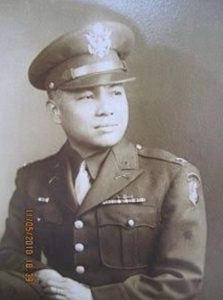Why did not Dr. Jose Rizal endorse Filipino Federal form of government as other Filipinos began to draft federalism in the closing of 400 years of Spanish colonial rule? Rizal, instead of building a political party, went along to consider the existing fault lines of ethnic differences as to which tribe would lead. He was more concerned of preserving the entire archipelago into one emerging nation. This was the first line under statement of purpose in the draft constitution that he wrote for the Liga Filipina, a political organization that anticipated the broad structures of a Filipino government.
In 1899, Filipino revolutionaries Emilio Aguinaldo and Apolinario Mabini put in their mind by dividing three big islands into three federal states namely Luzon, Visayas, and Mindanao.
In an article that Arnold “Aj” Garbanzos wrote in 1920, 120 Sultans and 30 Datus belonging to the Pat Pangampong Ranao (the Confederation of Sultanates of Lanao) wrote to the United States President requesting that should the U.S. government eventually make the Philippines a Commonwealth and then a Republic, Lanao as a Province chose not to be part of it. They still would like to be part of the US – perhaps as a State or a Protectorate. The reason behind this strange request was very simple – the Pat Pangampong Ranao was fully aware that the eventual Philippine Republic to be formed at that time would be a Unitary set-up, something which the Confederation did not like, since the Confederation was a Federal set-up and only a Federal Government like the United States of America could understand another Federal government, hence the request.
Garbanzos stressed further, Tomas Cabili thundered his opposition to a Unitary set up-on several grounds- that it would make Malacanang very powerful and therefore become dictatorial, he knew that a Unitary set-up would dissipate the economic advantages of Iligan and the Lanao provinces-which is the source of abundant water and power and that the 1935 Constitution only protected the rights of the Christian majority but not the Muslims and the Lumads— it showed no respect for their culture and values as a people.

Tomas Cabili argued for almost half a day in the August assembly, citing that since the envisioned 1935 Constitution was patterned after America, then we should be a Federal set-up-a position which was turned down by the majority. For him human dignity could only come when there is subsidiarity— a time honored principle of the Catholic faith. His parting words to the assembly after he argued his case was very prophetic: “Gentlemen of this august constitutional assembly, Mr. Senate President…. if you make this Government and this Constitution a Unitary set-up-there will be war in Mindanao!” And that was 1935.
Tomas Cabili was a student and an honored member of the Pat Pangampong Ranao, where he was proudly enthroned by the Maranao Tribe as Sultan Dimasangkay or the Great Sultan. Today we have proven that the wisdom of the Lone delegate from Lanao is true. And the rest is history. Truly the seeds of Federalism was born in Lanao. This Nation should have listened to Iligan and Lanao.
National Defense Secretary Tomas Cabili died along with President Ramon Magsaysay and 23 others on a plane crash on March 17, 1957 at Mount Manunggal in Balamban, Cebu.
In 1972-76 , an estimated 120,000 people died in the fighting, which also created one million internal refugees and caused more than 100,000 Philippine Muslims to flee to Malaysia. Some estimates exceeding two million people are estimated to have been displaced by the 40-year conflict and undetermined values on farm products.
After many years of armed struggle now Mindanaoans looking back on Tomas Cabili’s parting words during the assembly’ “Gentlemen of this august constitutional assembly, Mr. Senate President…. if you make this Government and this Constitution a Unitary set-up-there will be war in Mindanao!”
Bangsa Autonomous Region Muslim Mindanao (BARMM) as a ‘test case’ for proposed shift to federalism has a long way to go.

Leave A Comment